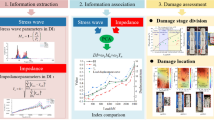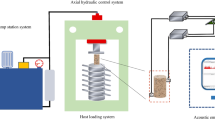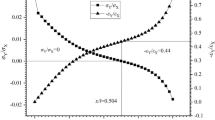Abstract
In the freezing and thawing test of concrete, elastic-wave methods are applied to estimate the frost damage nondestructively. Recently, two test methods are proposed in the RILEM recommendation. The alternative method A is based on the ultrasonic test, which measures the transmission time of the longitudinal wave (P wave), while the alternative method B measures the resonant frequencies of vibrations. With relation to these methods, evaluation of the frost damage by the elastic-wave methods is studied, focusing on the dynamic modulus of elasticity. The freezing and thawing tests were conducted by employing concrete samples after 1 year curing. As a result, the samples were not heavily damaged even after 300 cycles. Concerning the resonant frequencies of concrete samples, a three-dimensional analysis is performed by the boundary element method to identify actual vibration modes. It is clarified that an assumption of the one-dimensional resonant vibration is not applicable, resulting in a false discrepancy between the dynamic modulus and the static modulus of elasticity. It is found that relative modulus obtained from P-wave velocity is comparable to that from the tangential modulus of elasticity in the compression test, and is reasonably recommended to estimate the frost damage nondestructively.













Similar content being viewed by others
References
RILEM TC 176-IDC Final Recommendation (2004) Test methods of frost resistance of concrete: CIF-test: capillary suction, internal damage and freeze thaw test—reference method and alternative methods A and B. Mater Struct 37(274):743–753
ASTM C215-08 (2008) Standard test method for fundamental transverse, longitudinal, and torsional frequencies of concrete specimens
JIS A 1127 (2001) Japanese industrial standard method of test for dynamic modulus of elasticity, rigidity and Poisson’s ratio of concrete by resonance vibration
ASTM C666 (2008) Standard test method for resistance of concrete to rapid freezing and thawing
Loland KE (1989) Continuous damage model for load-response estimation of concrete. Cement Concr Res 10:395–402
Shah SP, Swarts SE, Ouyang CS (1995) Fracture mechanics of concrete. Wiley, New Yok, pp 452–462
Banerjee PK, Shaw RP (eds) (1982) Development of boundary element methods, vol 2. Applied Science Publishers, London
Acknowledgments
The research conducted is supported by Kumamoto University Global COE (Center of Excellence) Program: Global Initiative Center for Pulsed Power Engineering. To perform experiments and analyses, assistances of former graduate students: Messrs. Naoki Gotoh and Shou Noguchi are very valuable. The author wishes to deeply thank the program and their supports.
Author information
Authors and Affiliations
Corresponding author
Rights and permissions
About this article
Cite this article
Ohtsu, M. Damage evaluation in freezing and thawing test of concrete by elastic-wave methods. Mater Struct 44, 1725–1734 (2011). https://doi.org/10.1617/s11527-011-9730-0
Received:
Accepted:
Published:
Issue Date:
DOI: https://doi.org/10.1617/s11527-011-9730-0




